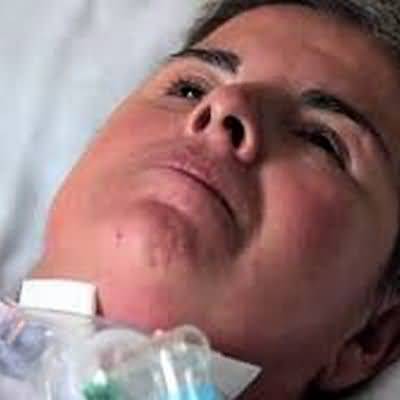OCULAR MOTOR CRANIAL NERVE PALSIES
OCULAR MOTOR CRANIAL NERVE PALSIES
In complete third nerve palsy, there is ptosis with a divergent and slightly depressed eye
Extraocular movements are restricted in all directions except laterally (preserved lateral rectus function)
Intact fourth nerve (superior oblique) function is detected by inward rotation on attempted depression of the eye
Pupillary involvement, manifesting as a relatively dilated pupil that does not constrict normally to light, usually means compression, which may be due to aneurysm of the posterior communicating artery or uncal herniation due to a supratentorial mass lesion
In acute painful isolated third nerve palsy with pupillary involvement, posterior communicating artery aneurysm must be excluded
Pituitary apoplexy is a rarer cause
Causes of isolated third nerve palsy without pupillary involvement include diabetes mellitus, hypertension, giant cell arteritis, and herpes zoster
Fourth nerve palsy causes upward deviation of the eye with failure of depression on adduction
In acquired cases, there is vertical and torsional diplopia that is most apparent on looking down
Trauma is a major cause of acquired particularly bilateral—fourth nerve palsy, but posterior fossa tumor and medical causes, such as in third nerve palsy, should also be considered
Similar clinical features are seen in congenital cases due to developmental anomaly of the nerve, muscle, or tendon
Sixth nerve palsy causes convergent squint in the pri- mary position with failure of abduction of the affected eye, producing horizontal diplopia that increases on gaze to the affected side and on looking into the distance
It is an important sign of raised intracranial pressure and may also be due to trauma, neoplasms, brainstem lesions, petrous apex lesions, or medical causes (such as diabetes mellitus, hypertension, giant cell arteritis, and herpes zoster)
In isolated ocular motor nerve palsy presumed to be due a medical cause, brain MRI is not always required initially, but it is necessary if recovery has not begun within 3 months
Ocular motor nerve palsy accompanied by other neurologic signs may be due to lesions in the brainstem, cavern- ous sinus, or orbit
Lesions around the cavernous sinus involve the first and second divisions of the trigeminal nerve, the ocular motor nerves, and occasionally the optic chiasm
Orbital apex lesions involve the optic nerve and the ocular motor nerves
Myasthenia gravis and thyroid eye disease (Graves oph- thalmopathy) should be considered in the differential diagnosis of disordered extraocular movements
When to Refer


















